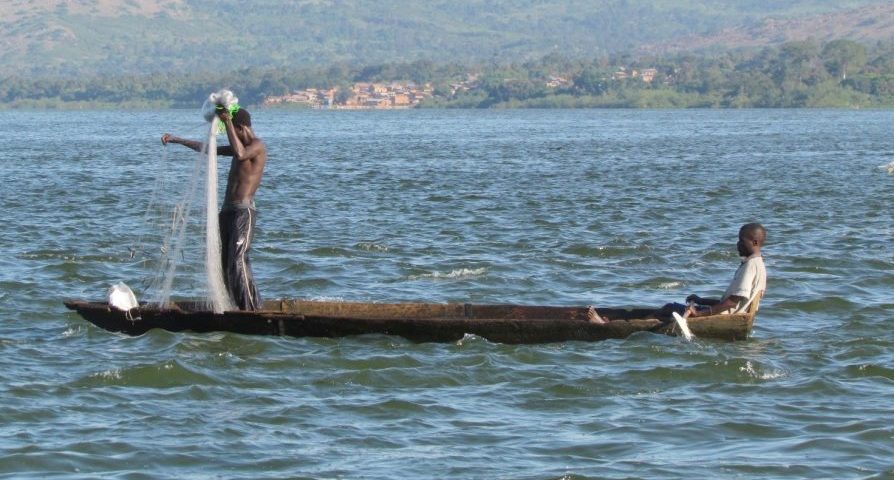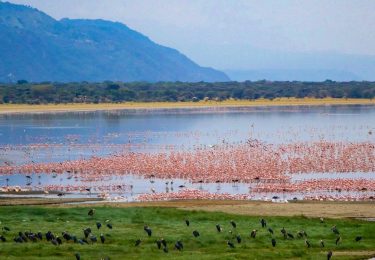- Home
- About Us
- Uganda safaris
- Long Safaris
- Short Safaris
- Day Short Safaris
- 1 Day Entebbe Botanical gardens weekend birding excursion
- I Day Entebbe City Tour
- 1 Day Jinja, Mabira, Ssezibwa Tour
- 1 Day Jinja Source of the Nile tour
- Lake Victoria Sunset Cruises
- 1 Day Kampala City Tour
- 1 Day Mabamba Shoebill Stork And Birding Tour
- 1 Day Makanaga Shoebill And Birding Trip
- 1 Day Ngamba Island Boat And Chimpanzee Excursion
- Other Tours
- Gorilla Safaris
- Uganda Gorilla safaris
- 4 Days Mgahinga Bwindi gorilla and golden monkey trekking safari
- 3 Days Mgahinga Gorilla trekking safari
- 5 Days Mgahinga Gorillas, Golden Monkey And Lake Bunyonyi Tour
- 5 Days Gorillas And Wildlife, L.Mburo, Bwindi and L. Bunyonyi
- 8 Days Wildlife, Gorillas, Golden Monkeys Trip
- 8 Days Gorillas Chimpanzee and wildlife Trekking Tour
- 9 Days Kidepo Valley National park and Bwindi Gorilla Safari. Wildlife and gorillas
- 11 Days Gorilla And Chimpanzee Tracking and wildlife Safari
- Rwanda Gorilla Safaris
- Uganda Gorilla safaris
- National Parks
- Kidepo Safaris
- Queen Elizabath Safaris
- Lake Mburo Safaris
- Mgahinga
- Mgahinga Gorilla National Park
- 3 Days Mgahinga Gorilla trekking safari
- 4 Days Mgahinga Bwindi gorilla and golden monkey trekking safari
- 5 Days Rwand-Uganda Gorilla, Golden Monkey trekking trip
- 5 Days Mgahinga Gorillas, Golden Monkey And Lake Bunyonyi Tour
- 8 Days Wildlife, Gorillas, Golden Monkeys Trip
- Our Blog
- Other Safaris
- Home
- About Us
- Uganda safaris
- Long Safaris
- Short Safaris
- Day Short Safaris
- 1 Day Entebbe Botanical gardens weekend birding excursion
- I Day Entebbe City Tour
- 1 Day Jinja, Mabira, Ssezibwa Tour
- 1 Day Jinja Source of the Nile tour
- Lake Victoria Sunset Cruises
- 1 Day Kampala City Tour
- 1 Day Mabamba Shoebill Stork And Birding Tour
- 1 Day Makanaga Shoebill And Birding Trip
- 1 Day Ngamba Island Boat And Chimpanzee Excursion
- Other Tours
- Gorilla Safaris
- Uganda Gorilla safaris
- 4 Days Mgahinga Bwindi gorilla and golden monkey trekking safari
- 3 Days Mgahinga Gorilla trekking safari
- 5 Days Mgahinga Gorillas, Golden Monkey And Lake Bunyonyi Tour
- 5 Days Gorillas And Wildlife, L.Mburo, Bwindi and L. Bunyonyi
- 8 Days Wildlife, Gorillas, Golden Monkeys Trip
- 8 Days Gorillas Chimpanzee and wildlife Trekking Tour
- 9 Days Kidepo Valley National park and Bwindi Gorilla Safari. Wildlife and gorillas
- 11 Days Gorilla And Chimpanzee Tracking and wildlife Safari
- Rwanda Gorilla Safaris
- Uganda Gorilla safaris
- National Parks
- Kidepo Safaris
- Queen Elizabath Safaris
- Lake Mburo Safaris
- Mgahinga
- Mgahinga Gorilla National Park
- 3 Days Mgahinga Gorilla trekking safari
- 4 Days Mgahinga Bwindi gorilla and golden monkey trekking safari
- 5 Days Rwand-Uganda Gorilla, Golden Monkey trekking trip
- 5 Days Mgahinga Gorillas, Golden Monkey And Lake Bunyonyi Tour
- 8 Days Wildlife, Gorillas, Golden Monkeys Trip
- Our Blog
- Other Safaris
LAKE KYOGA

LAKE BUNYONYI
September 19, 2024
LAKE MANYARA
September 19, 2024Lake Kyoga, situated in central Uganda, north of Lake Victoria, is a unique polymictic basin formed by the Victoria Nile in its middle course. With an elevation of 1,033 meters above sea level and a vast area of 1,720 square kilometers, this shallow lake boasts an intricate network of swampy, papyrus-reeded shores. The papyrus masses that line its shores are often dislodged by strong winds, occasionally blocking the river’s flow. As the Victoria Nile traverses the lake, it connects Lake Victoria to Lake Albert, with the main inflow from Lake Victoria carefully regulated by the Nalubale Power Station in Jinja. Additionally, the majestic Mountain Elgon contributes to the lake’s water source, enriching its ecosystem. Although Lake Kyoga is part of the esteemed African Great Lakes system, it is distinctively not classified as a Great Lake itself, yet its significance within the region’s hydrological and ecological landscape is undeniable.
Lake Kyoga’s depth is relatively shallow, reaching a maximum of approximately 5.7 meters, with the majority of the lake being less than 4 meters deep. The shallowest areas, with depths of less than 3 meters, are completely blanketed by water lilies, while the swampy shoreline is dominated by papyrus and the invasive water hyacinth. The papyrus growth is so dense that it forms floating islands, which drift among several small permanent islands. The lake is surrounded by extensive wetlands, nourished by a complex network of streams and rivers, creating a unique and dynamic ecosystem.
The formation of Lake Kyoga was a result of a complex geological process that began in the Miocene era. A series of earth movements led to the faulting of the Western Rift, causing a significant reversal of the previous East-West drainage pattern. Consequently, the River Kafu, which once flowed westwards, changed its course and began flowing eastwards. This reversal led to the ponding-back of the Kafu River, resulting in the formation of Lake Kyoga. This geological event had a profound impact on the region’s hydrology, creating a unique and shallow lake that has since become an integral part of the local ecosystem.
Lake Kyoga was discovered by Italian explorer Carlo Piaggia in 1876. Born on January 4, 1827, in Badia Cantignano, Lucca, Piaggia was a renowned explorer who dedicated his life to uncovering the secrets of Africa. During his expeditions, he sought to find a river passage connecting the Nile to the great lakes of East Africa. Upon discovering Lake Kyoga, Piaggia named it “Lake Capechi”. Although he did not live to see the full recognition of his discovery, Piaggia’s findings contributed significantly to the understanding of Africa’s geography. He passed away on January 17, 1882, in Sudan, leaving behind a legacy of exploration and discovery.
Lake Kyoga’s numerous swamps are a result of its connection to the Victoria Nile, which feeds the lake with water from Lake Victoria, starting from Jinja and flowing northwards towards Kyoga. The lake’s shallow waters, with an average depth of less than 4 meters, and its extensive shoreline, make it an ideal environment for swamp formation. The lake’s dimensions, approximately 80 miles (129 km) long and covering an area of 1,720 square kilometers, contribute to its unique ecosystem. Situated at an elevation of 1,033 meters (3,390 feet) above sea level, Lake Kyoga’s swamps provide a habitat for diverse aquatic life and support the local ecosystem.
Lake Kyoga is a freshwater lake, boasting a unique ecosystem that supports a diverse range of aquatic life. The lake’s surface is dotted with numerous islands, some of which serve as habitats for various bird species, while others are home to fishermen’s villages. These islands, often shrouded in mist, add to the lake’s natural beauty and create a sense of serenity. The freshwater environment of Lake Kyoga makes it an ideal habitat for fish, birds, and other aquatic organisms, supporting the local food chain and ecosystem.
Lake Kyoga is indeed a Rift Valley Lake, situated in the western branch of the East African Rift System. Its location within the Rift Valley is characterized by the extension of the Victoria Nile, which flows through the lake and connects it to Lake Victoria. The lake’s water levels are regulated by the Nalubale Power Station, located in Eastern Jinja, which controls the flow of water from Lake Victoria into Lake Kyoga. This unique geological setting makes Lake Kyoga a fascinating example of a Rift Valley Lake, with its formation and ecosystem shaped by the region’s tectonic activity.
Lake Kyoga has several extensions, often referred to as “finger lakes,” which include Lake Kwania, Lake Bisina, and Lake Opeta. These lakes are situated amidst expansive swamp lands, which become even more pronounced during rainy seasons. Characterized by their shallow depths, typically reaching only 8-9 meters, these lakes are intimately connected to Lake Kyoga. Notably, Lake Opeta transforms into a separate lake during dry seasons, highlighting the dynamic nature of this aquatic ecosystem.
Lake Kyoga is characterized by three distinct environmental zones, each with unique features and inhabitants. The first zone consists of open water deeper than 3 meters, while the second zone is comprised of shallow waters less than 3 meters deep, which are densely covered with water lilies and water hyacinth. The third zone is defined by extensive swampy areas, primarily dominated by papyrus, that fringe the shoreline. This diverse lake ecosystem supports a rich biodiversity, encompassing a variety of flora and fauna. Prominent aquatic plants include Cypenus Papyrus, Hyppo Grass, Cattail, Water Lily, and Water Lettuce. Additionally, Lake Kyoga is home to significant populations of large crocodiles, highlighting the lake’s status as a thriving and complex ecosystem.
Lake Kyoga is home to a diverse array of fish species, with over 46 different types, including some endemic species found nowhere else. In the late 1950s, the Nile Perch was introduced to the lake to enhance fish populations. However, the rapid proliferation of Nile Perch had a devastating impact on the native fish species, leading to the near-extinction of several domestic species. These affected species include Synodontis Victoria, Engraulicypris Argentus, Barbus Kiogae, Tilapia Esculenta, Tilapia Variabilis, Clarias Mossambicus, Mormyrus Kanumme, Schilbe Mystus, and Haplochromis Macrodon. The introduction of Nile Perch has significantly altered the lake’s ecosystem, highlighting the importance of careful management and conservation of aquatic resources.
Lake Kyoga benefits from a plentiful water supply, courtesy of two distinct rainy seasons. The first rainy season occurs from October to December, followed by a second season from March to May. During the dry period, spanning from December to February, a notable temperature variation exists between the northern and southern regions of Uganda, with the north experiencing higher temperatures. Overall, Lake Kyoga is characterized by a tropical climate, moderated by the surrounding geography.
Did you know that the River Nile, also known as the Victoria Nile, takes a remarkable journey through Lake Kyoga? It enters the shallow lake and navigates through its dense swamp vegetation, before flowing out in a westerly direction. As it continues its course, it descends into the East African Rift System, passing over the breathtaking Murchison Falls in Murchison Falls National Park. Finally, it empties into the northern end of Lake Albert, showcasing the incredible geography and hydrology of the region.
ACTIVITIES CARRIED OUT ON LAKE KYOGA
Fishing
Fishing is a popular activity on Lake Kyoga, thanks to its diverse aquatic life featuring over 46 fish species. To engage in fishing, visitors must head to designated areas and obtain a fishing permit. It’s also essential to bring your own fishing gear, as this is not typically provided. By following these guidelines, you can enjoy a rewarding fishing experience on the lake.
Cultivation
Participate in the local cultivation practices and gain hands-on experience in agricultural techniques used by the communities surrounding Lake Kyoga. This activity offers a unique opportunity to learn about and contribute to the growth of various crops, while also understanding the methods employed to enhance soil quality. The cultivation practices focus on improving soil physical conditions, suppressing weed growth, enhancing water percolation, and loosening the soil. By joining in, you’ll not only support the local farmers but also gain a deeper appreciation for sustainable agriculture.
Livestock farming
Experience the joy of livestock farming with the local communities surrounding Lake Kyoga. The people in this region raise a variety of animals, not only for their utility but also for pleasure. These animals are commonly farmed for their meat, hides, wool, milk, and labor. During your visit, you’ll have the opportunity to participate in this activity, gaining hands-on knowledge and insight into the art of cattle rearing. Engage with the local farmers, learn about their techniques, and discover the rewards of raising livestock.
Birding
Lake Kyoga is a birdwatcher’s paradise, boasting a diverse array of bird species that can be spotted on its shores. The lake is home to a wide range of aquatic, migratory, and residential birds, including kingfishers, African fish eagles, Yellow-billed ducks, Hamerkops, African jacanas, and many more. Notably, Lake Kyoga is one of the few habitats of the endangered Fox Weaver bird, a species found nowhere else in Uganda. This unique opportunity to spot such a rare bird makes Lake Kyoga a must-visit destination for avid birders and nature enthusiasts.
Boat cruising
Embark on a leisurely boat cruise across Lake Kyoga and indulge in breathtaking scenic views. As you sail, keep an eye out for an array of wildlife, including hippos, crocodiles, and other aquatic creatures that call the lake home. Additionally, the lake’s shores and waters are a haven for bird enthusiasts, with numerous species to spot, such as water birds, kingfishers, and many more. This relaxing cruise offers a unique opportunity to connect with nature and witness the beauty of Lake Kyoga’s diverse ecosystem.
Visit to the fish landing sites
Explore the bustling fish landing sites of Lake Kyoga, where the daily catch is brought ashore. Visit one of the many lively landing sites, such as Kibuye, Kikoyiro, Moone, Lwampanga, Kisonge, or Namasale, and witness the vibrant activity firsthand. Observe how fishermen skillfully offload their catch from boats and meticulously sun-dry the fish before transporting it to market. This immersive experience offers a glimpse into the local fishing industry and the importance of Lake Kyoga as a source of livelihood for surrounding communities.
Community visits
Immerse yourself in the local culture by visiting the villages surrounding Lake Kyoga, where you can gain insight into the daily lives and traditions of the community. Accompanied by a knowledgeable guide, explore the villages and learn about the people’s unique ways of living, their reliance on fishing, and the skills that have been passed down through generations. Additionally, you’ll have the opportunity to discover and purchase traditional handmade crafts, such as woodcarvings, textiles, or pottery, which make for wonderful souvenirs to commemorate your trip.
Note: It’s worth noting that the area surrounding Lake Kyoga remains unindustrialized due to the absence of a power grid or alternative energy sources. This lack of industrialization has helped preserve the region’s natural beauty and traditional way of life, making it an attractive destination for those seeking an authentic and off-the-beaten-path experience.
How to get to Lake Kyoga
Getting to Lake Kyoga is relatively straightforward. One option is to travel from Kampala, the capital city of Uganda, to Soroti in the eastern part of the country, via the Lale route. Alternatively, you can take a scenic boat ride from Nakasongola to Namasale, crossing the lake and enjoying the stunning views along the way. Whichever route you choose, you’ll be rewarded with breathtaking scenery and a unique experience in this beautiful corner of Uganda, known as the “Pearl of Africa”.





